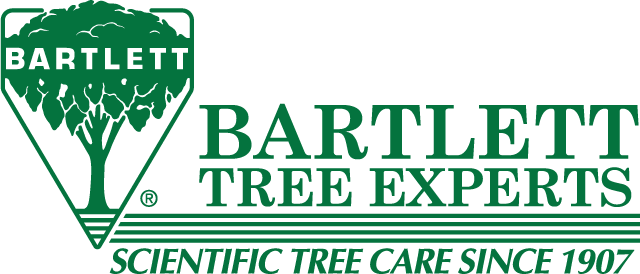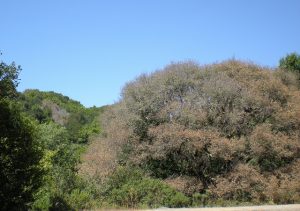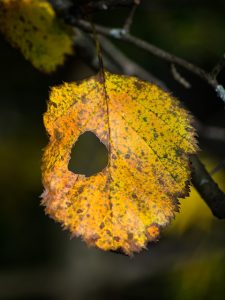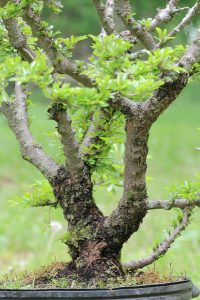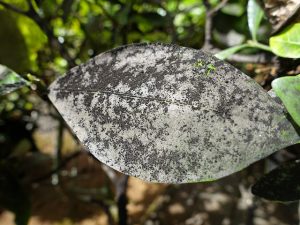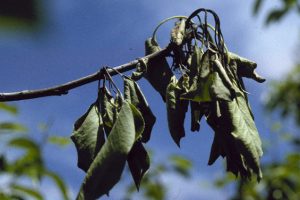The sometimes strange and wet weather of the Bay Area can really do a number on trees and shrubs in our yards. Humidity, fog, and general wetness can really impact the way our trees grow and how they flourish, but it can also be a hindrance. Since trees are living things, they can susceptible not only to weather patterns but what we put them through – from damage due to human error to pollution from cars – can make diseases worse.
So what can you do? The first thing is to stay vigilant about looking at your trees. By looking at everything from the root line to the tips of the leaves, you will be able to know what ‘normal’ looks like, and then be able to determine what looks suspicious. In particular, you have to be on the lookout for these five tree diseases common in the San Francisco area:
5. Sudden Oak Death
- Cankers form along the bottom of trees
- Sudden uptick in production of sap
- Trees die within a few weeks
One of the most serious tree diseases, Sudden Oak Death sounds like it only impacts oak trees, but that isn’t true. It is true that oak trees have been the most affected by the disease, however. This problem can (and has) killed millions of trees in California alone.
Sudden Oak Death starts with water mold and eventually a canker forms. This canker will actually bleed sap out of the tree, eliminating nutrients and everything the tree needs to survive. Naturally, it is also extremely contagious among trees.
If that isn’t scary enough, U.C. Berkeley says that the disease is actually related to the Irish Potato Famine.
4. Shot Hole Fungus
- Small holes on the leaves of a tree or shrub
- Eventual browning of the leaves between the holes
- Yellowing stems toward the center of the shrub or tree
Shot Hole Fungus is a disease that targets Prunus species, which typically includes stone fruit and almond trees. It is particularly a problem for trees in San Francisco because of the warm, wet winters that we have. Even worse, the disease is exasperated by urban pollutants.
Thankfully, this disease isn’t deadly, just merely cosmetic. Characterized by the holes that make it look like someone shot them, the trees do have some degraded performance from trees without the disease.
According to the Center for Urban Agriculture, it can also open up your tree to other diseases because it weakens it.
3. Chinese Elm Anthracnose
- Branches dying from the tips
- Cankers near the base of the tree
- Black, tarlike spots on leaves
There are quite a few Chinese Elm trees in San Francisco, and there should be because there are great trees. However, they are one of the trees that has a specific disease that impacts them. Of course, other trees can get anthracnose. This disease is actually a fungus that can cause individual branches to die starting with the tips. It has been said to give the tree a “frizzy hair” look.
If you have been impacted before, it may seem like your tree has recovered. However, “Severe defoliation year after year, however, may weaken the tree and increase its susceptibility to insects, other diseases, and stressful environmental conditions,” according to the University of California Extension.
The best way to prevent this disease is to have your trees professional pruned during the fall or winter months.
2. Sooty Mold
- Presence of aphids in your garden
- Black sappy covering on the bark or leaves
- Yellow, curling leaves in summer or spring
Sooty Mold is terrible for many reasons, but the most terrifying part is probably that it tends to bring pests with it – Aphids. Mostly commonly found during the spring and summer months, this problem very quickly spreads to all kinds of trees. Even worse, they reproduce extremely quickly so there will be many of them in about two weeks.
This is an interesting disease because it doesn’t actually kill your tree – it will just make it ugly. Yellow, curling leaves and a furry mold growth on the bark can make it an eyesore in your yard. It is quite dangerous for young or weak trees.
Since the disease often targets fruit trees, it is important to note that the University of California says that, “Fruits or vegetables covered with sooty molds are edible. Simply remove the mold with a solution of mild soap and warm water.”
1. Fire Blight
- “Scorched” look of the stems, bark, and leaves
- Blossoms turn brown or wilt very quickly
- Tree oozing amber colored bacteria
Fire Blight is a somewhat disgusting, contagious bacterial disease. It quickly attacks your trees in the early spring, making trees look like they have just been burnt. It takes about 1-2 weeks for everything to look awful, not quite giving you enough time to take care of it.
Unfortunately, Fire Blight spreads quickly through many different means, including birds, insects, bees, rain, and the wind. If one tree or neighbor has the problem, it isn’t rare to see many trees with the same symptoms. Thankfully, it doesn’t seem to impact many tree types; the most commonly affected are apple and pear trees, according to the University of Minnesota. However, it can hit rose bushes and raspberry plants.
At the end of the day, you have to pay attention to your trees and inspect them regularly. Skipping even a week or two or checking can really impact their health. If you want to know what to look for on your tree or you find something that seems a bit strange to you, consider calling a professional for help.
The team at Econo Tree Service is here for you. We will inspect your trees and if we do find something that needs to be remedied, we can help you take care of it. Whether your tree is in danger of a disease or actively impacted by something, we will try our hardest to save your tree. If it can’t be saved, we can help you to safely eliminate it from your yard.
Give us a call today at (650) 200-2495.
Header Photo Courtesy of Michael Fraley on Flickr!
